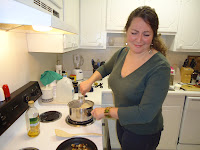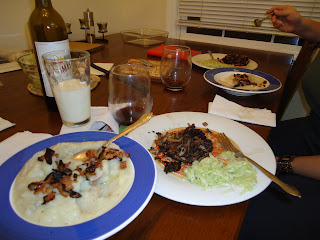After last week and our trip to Monaco, we packed away our Prada shades and folded our designer jeans and off we went to a much more rugged destination. We arrived eager and ready in Madagascar, commonly referred to as the “Red Island”. Much like the red soil and constant erosion which provide for the nickname, so too where our stereotypes for this country washed away. For this small island nation (4th smallest in the world) stricken by poverty, they sure were rich with culture.
When thinking of Madagascar, most may think of the animated film. Helen thinks of her dear friend Adventure Andy. Andy runs and adventure travel company, largely wildlife based, to remote regions all over the world. His connections reach from Costa Rica to Sri Lanka, Botswana to Siberia. Not only is he a rugged travel enthusiast, he is an amazing chef, as his friends and lovely family can attest. So, we turned off our Google engine and turned to Andy for a three-course excursion to Madagascar.
We began with a traditional coastal crab dish. Now would be an excellent time to point out that most of our lives have been spent in bathing suits at Wrightsville Beach. Our family lives, breathes, and wrote the Book on Seafood (only found on the shelves of the Heyward mind). It’s genetic. So, we were overly excited when we got Andy’s first recipe for Malagasy Crab Legs. We’ve had crab boiled, baked, stuffed, caked, and even deviled, but never prepared in a wok.
We heated the wok with olive oil, onion, garlic and fresh shredded ginger. These ingredients were all recurring items within this country’s cuisine. We sweated everything down for a few minutes before we laid the legs to rest in the pan. As you know, we are not blessed to live by the seashore anymore and couldn’t find the traditional Dungene crab clusters, so we hit up our new favorite store, Compare Foods, for 2 lbs of legs. Most crab you’ll find in the supermarket has already been flash steamed to kill bacteria so you won’t need to cook these very long. Right before you take the crab off the heat, squeeze some lime or throw a little bit of white wine over top. No need to reach for the salt...this dish is literally finger-lickin’ good as is. We give this dish two claws up.
Before we moved onto our main course, we had to prepare the traditional hot chili relish. More commonly referred to as ‘Sakay’, this spicy relish comes in such varieties as lemon and onion. We decided to combine to the two and cheated, as we normally do, and used a box shredder cuz we have no fancy knives. We got out a little bowl and stirred up some shredded ginger, some onion, pressed 2 or 3 garlic cloves, the flesh of a lemon or two, and one chopped Serrano pepper and stirred it up. Yes, we know we’re wimps. You can do Habanero or Sakay peppers if you want a challenge. This relish is served as a side to almost all main dishes of Madagascar, has a great flavor and packs as much heat as you want it to.
Andy also blessed us with our main dish this week, ‘Ramazava’. For lack of better way to describe, it’s a meat stew. It’s hearty, healthy, and delicious. Serve over rice, add sakay, a little garnish if you’re feeling fancy, and enjoy. This is our version of this traditional dish - it makes enough to feed a family of about 7. Start with about 6 cups of water, throw in some beef bouillion cubes, about 6 oz of tomato paste and 6 chopped roma tomatoes. Stir it up and let it cook down a bit. Again, we turned to Compare for the best meat in town and got 1 ½ pounds of each of the following: Stew Beef Chunks, Stew Pork Chunks, and Chicken Breasts (chopped in 1-2 inch pieces), all boneless. We all know meat is better on the bone, so do it if your heart desires. Throw in some lamb if you’re feeling frisky. You then add the meats consecutively and remember, DO NOT RUSH! After all, we live in a world in which all meats are not created equal. Start with the beef, followed later by the pork, finishing last with the chicken. Don’t throw in the pork until that beef gets tender, as with the chicken to the pork. Add swiss chard or spinach about 30 minutes before serving. This is a dish that could easily be cooked all day. If you own a crock-pot, it might be well put to use here.
Add some rhythmic African music, perhaps that of Radio Vazogasy which streams live out of Antananarivo and you’ll see the kitchen transform. Look out the back window. Lemurs! One climb up the Baobab tree, a sip of Rice Water, a gulp of rum, and this trip will be complete.
Add some rhythmic African music, perhaps that of Radio Vazogasy which streams live out of Antananarivo and you’ll see the kitchen transform. Look out the back window. Lemurs! One climb up the Baobab tree, a sip of Rice Water, a gulp of rum, and this trip will be complete.









































